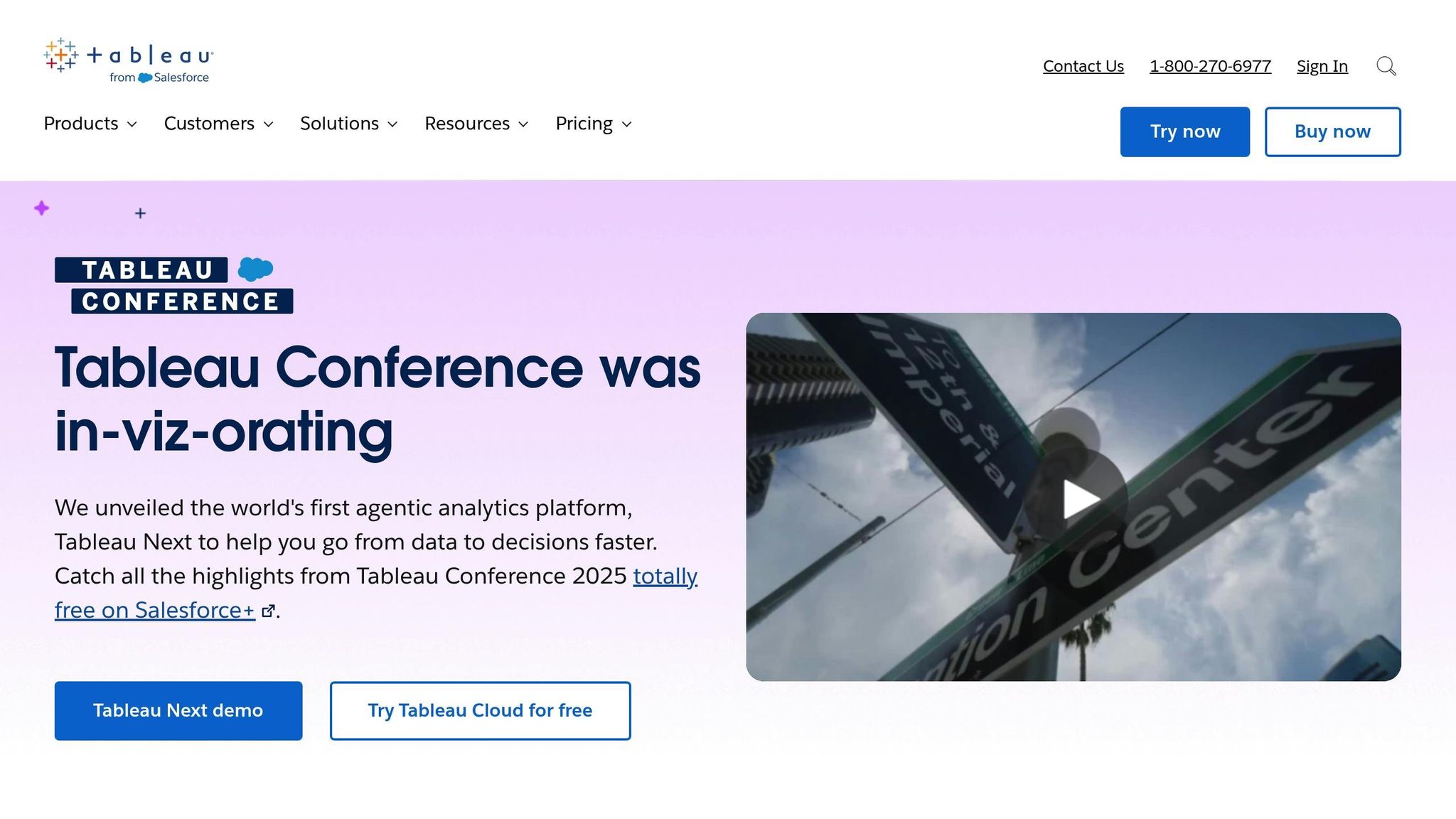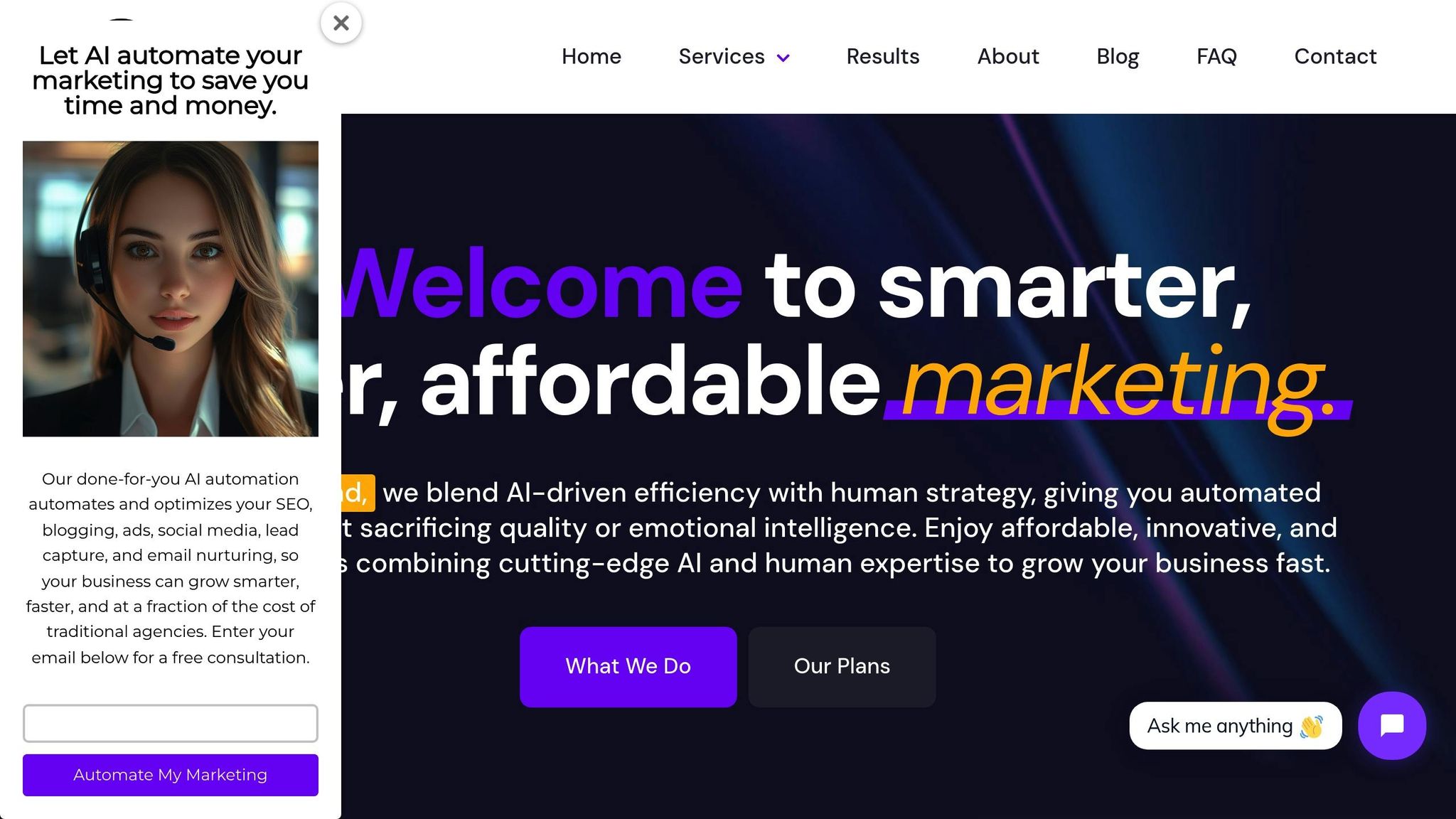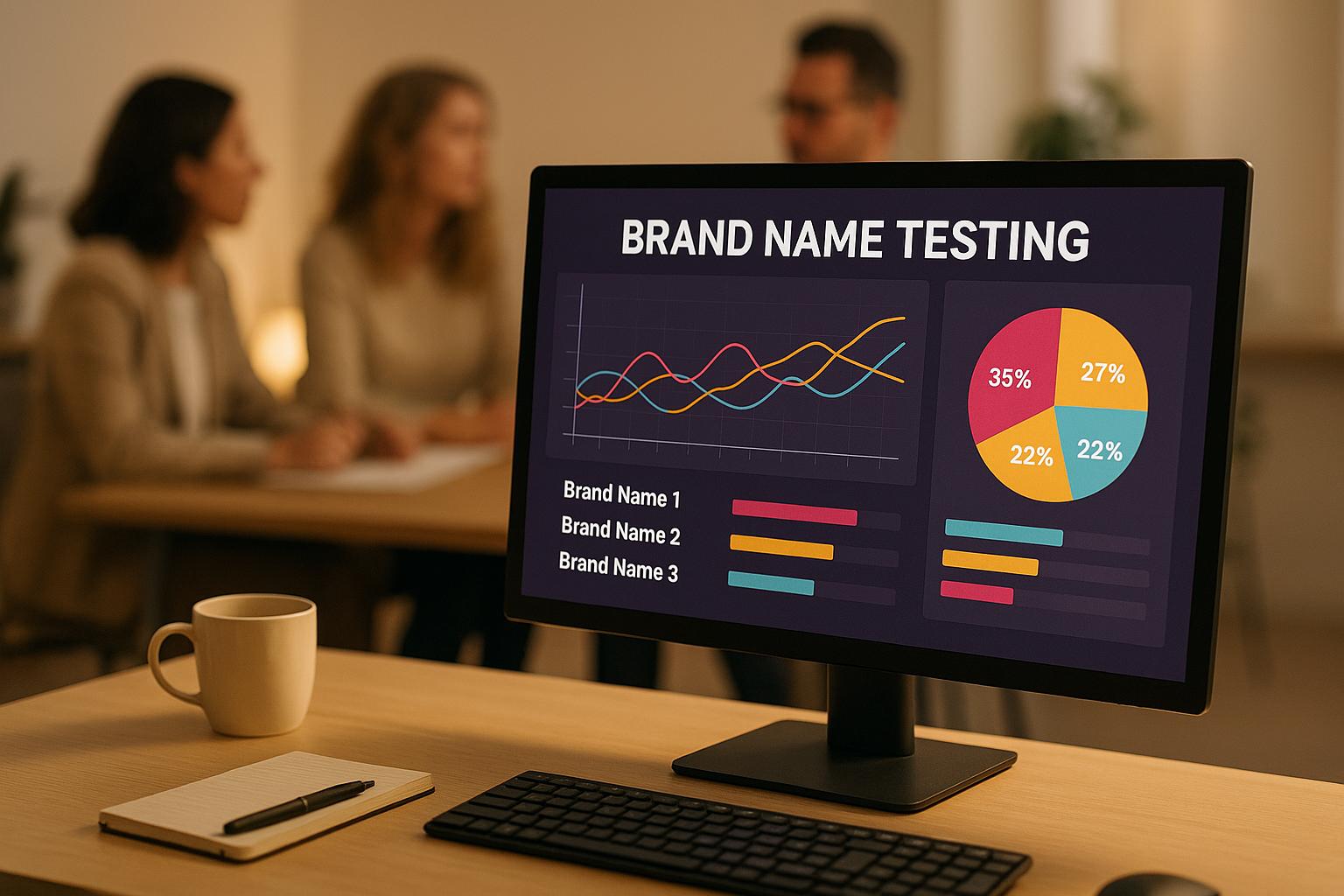In today’s data-driven world, predictive analytics tools are helping small businesses improve ROI by making smarter decisions based on historical data and AI. These tools are affordable, starting as low as $5 per user per month, and can reduce costs, boost customer retention, and streamline operations. For example, a small coffee shop cut marketing expenses by 38%, and Sephora achieved an 80% customer loyalty rate using these tools.
Key Features to Look For:
- Integration: Tools with pre-built connectors and real-time syncing.
- Pricing: Affordable plans with transparent costs and scalability.
- AI Capabilities: Automated insights, anomaly detection, and predictive modeling.
- Ease of Use: Tools requiring minimal training for quick adoption.
Top Tools for Small Businesses:
- Zoho Analytics: $24/month, user-friendly with 250+ connectors.
- Microsoft Power BI: $9.99/user/month, ideal for Office 365 users.
- Tableau: Starts at $15/user/month, great for advanced analytics.
- My Rich Brand: $299/month, focused on marketing ROI with AI.
Quick Comparison:
| Tool | Starting Price | Key Feature | Best For |
|---|---|---|---|
| Zoho Analytics | $24/month | 250+ connectors, easy setup | Small teams |
| Microsoft Power BI | $9.99/user/month | Office 365 integration | Microsoft users |
| Tableau | $15/user/month | Advanced visualizations | Data scientists |
| My Rich Brand | $299/month | AI-driven marketing analytics | Marketing-focused teams |
Predictive analytics tools are no longer just for large enterprises. By choosing the right tool, small businesses can improve ROI, cut costs, and stay competitive. Start by defining your goals, integrating your platforms, and tracking performance to make data-driven decisions.
Boost B2B ROI with Predictive Analytics
Must-Have Features for ROI Analytics Tools
When selecting ROI analytics tools, it’s vital to focus on solutions that offer immediate benefits, are easy to use, and don’t strain your budget. Research shows that 54% of businesses cut costs by incorporating AI into their operations [3]. This makes choosing tools with the right features even more critical.
Simple Integration Options
Seamless integration isn’t just a convenience – it’s a game-changer. Studies reveal that efficient integration can reduce order processing time by 65% and minimize errors by 70% [4].
"By connecting your marketing tools and tech, you can ditch the busy work and focus on the good stuff – growing your business. Make decisions based on accurate information, not just gut feelings. That’s the power of seeing all your data in one place." [4]
To ensure smooth integration, prioritize tools that offer:
- Pre-built connectors for popular platforms
- Cloud-based integration for flexibility
- API access for custom connections
- Real-time syncing to keep data updated
Budget-Friendly Pricing
For small businesses, affordability and scalability are key. The right tool should grow with your business without causing financial strain. When evaluating pricing, look at the following factors:
| Pricing Factor | What to Look For |
|---|---|
| Base Cost | Transparent monthly or annual subscription plans |
| User Limits | Flexible scaling without sharp price increases |
| Data Storage | Sufficient storage with fair overage fees |
| Feature Access | Core features included in the base price |
| Training Support | Onboarding and basic training at no extra cost |
Affordable tools that don’t compromise on features allow businesses to scale efficiently while keeping costs under control.
AI-Powered Insights & Automation
AI has become a cornerstone of modern analytics tools. With 22% of global marketers now using AI for personalized marketing automation [3], businesses report a 10-15% boost in customer retention rates [5].
"You don’t have to be an expert to go in and use these tools anymore." [2]
Look for AI-driven features such as:
- Automated data cleaning to save time
- Predictive modeling for better forecasting
- Natural language processing for intuitive interactions
- Automated reporting to streamline workflows
- Anomaly detection to catch issues early
One compelling example: A U.S.-based health insurance broker doubled their revenue in just one year by adopting AI-powered analytics, all without increasing their staff size [6]. This highlights how the right AI features can transform your ROI and drive meaningful results.
4 Best ROI Analytics Tools for Small Business
The Business Intelligence market is forecasted to hit $59.7 billion by 2025 [8]. With the essential features already outlined, these tools aim to tackle small business ROI challenges effectively. Here are four standout options designed to meet key ROI optimization needs.
Zoho Analytics

Zoho Analytics comes highly recommended, with 91% of users endorsing it [9]. Starting at $24/month, it delivers a range of features, including:
- Over 250 native and live data connectors
- AI-driven insights
- A user-friendly drag-and-drop interface
- Automated reporting tools
"Zoho Analytics gives us an instant snapshot of our sales performance and also helps us understand customer-preferred brands, market trends, seasonal trends, and sudden order spikes." [9]
Microsoft Power BI
With a 17% market share [8], Microsoft Power BI offers enterprise-level analytics at just $9.99 per user per month. Its key features include:
- Seamless integration with Excel and Office 365
- Advanced data modeling tools
- Real-time analytics dashboards
- Natural language querying
Power BI is particularly popular in industries like finance, healthcare, retail, and manufacturing [8].
Tableau

Tableau starts at $15 per user per month for its Viewer role, with a tiered pricing model that scales based on user needs [7]. It provides:
- Interactive data visualization
- Integration with Salesforce
- Custom dashboard creation
- Advanced analytics features
Here’s a breakdown of Tableau’s role-based pricing:
| Role | Price/Month | Best For |
|---|---|---|
| Viewer | $15 | Users who view and interact with dashboards |
| Explorer | $42 | Analysts creating custom views |
| Creator | $75 | Data scientists and advanced users |
My Rich Brand

Priced at $299/month, My Rich Brand combines AI analytics with digital marketing data to help businesses boost ROI. Key features include:
- AI-powered ROI optimization
- Automated performance tracking
- Campaign analytics and custom dashboards
- Integration of SEO and advertising analytics
Each of these tools brings something different to the table, making them valuable for small businesses aiming to improve ROI through predictive analytics. The best choice depends on your specific goals, current tech setup, and budget.
sbb-itb-c00c5b1
Analytics Tools Feature Comparison
Choosing the right predictive analytics tool can be a game-changer for your business, especially with 72% of companies now using AI in key functions like marketing and sales [10]. This side-by-side comparison highlights the essential features to help you identify the best solution for maximizing ROI.
Features and Pricing Table
Here’s a breakdown of the features and pricing for the tools discussed:
| Feature | Zoho Analytics | Microsoft Power BI | Tableau | My Rich Brand |
|---|---|---|---|---|
| Starting Price | $24/month | $9.99/user/month | $70/user/month | $299/month |
| Data Integration | 250+ connectors | Office 365 suite | Salesforce native | Marketing platforms |
| AI Capabilities | Basic predictive | Advanced ML | Statistical modeling | AI-powered ROI |
| Real-time Analytics | Yes | Yes | Yes | Yes |
| Custom Dashboards | Basic | Advanced | Advanced | Marketing-focused |
| Mobile Access | Yes | Yes | Yes | Yes |
| Training Required | Minimal | Moderate | Extensive | Minimal |
| Best For | Small teams | Microsoft users | Data scientists | Marketing ROI |
These tools empower small businesses to tap into predictive analytics without needing deep technical skills. Here’s what sets them apart:
Key Differentiators
Integration Capabilities
- Microsoft Power BI: Seamlessly integrates with the Microsoft ecosystem, making it ideal for Office 365 users.
- Tableau: Offers strong connectivity with Salesforce, a big plus for CRM-heavy workflows.
- My Rich Brand: Focuses on marketing platform integrations, catering to businesses prioritizing ROI in their campaigns.
Cost Considerations
Pricing varies significantly, so think beyond the subscription fee. Factor in the number of users, data storage needs, integration costs, and any training expenses.
Ease of Use
Tools requiring minimal training, like Zoho Analytics and My Rich Brand, allow teams to adopt predictive analytics more quickly. This can be a critical advantage for businesses with limited technical resources.
As data continues to grow, with projections reaching a staggering 175 zettabytes by 2025 [1], scalability should also be a top priority. Matching the tool’s features with your team’s expertise and your business objectives will ensure you make the most out of your analytics investment.
How to Set Up ROI Analytics Tools
To effectively track and improve your marketing performance, setting up ROI analytics tools involves three key steps: defining your goals, connecting your platforms, and consistently monitoring your results.
Define Your Goals
Start by aligning your analytics efforts with clear business objectives. As Bill Bruno, CEO of Celebrus, puts it:
"You want to save money, spend money more wisely or make more money. It’s as simple as that. If you look at it from that perspective, the most immediate areas of benefit and focus are on your customers." [12]
Here’s a breakdown of goal categories and the metrics you should track:
| Goal Category | Metrics to Track | Target Timeline |
|---|---|---|
| Revenue Growth | Customer Lifetime Value, Conversion Rate | Monthly/Quarterly |
| Cost Reduction | Customer Acquisition Cost, Marketing Spend | Monthly |
| Efficiency | Campaign Performance, Resource Utilization | Weekly |
| Customer Success | Customer Satisfaction, Retention Rate | Quarterly |
Once you’ve defined your goals, the next step is to bring all your marketing data into one place for better insights.
Connect Your Marketing Tools
Integrating your marketing tools is crucial for a complete view of your ROI. By unifying your platforms, you can make real-time adjustments and quickly identify which campaigns deliver the most value [13].
Here’s how to get started:
- Evaluate compatibility: Ensure your tools and platforms can work together, including checking for necessary APIs.
- Set up synchronization: Establish protocols to keep data flowing seamlessly between systems.
- Define tracking metrics: Identify the key metrics you’ll monitor across platforms.
- Test for accuracy: Verify that the data syncs correctly and matches across tools.
- Regularly monitor data flow: Keep an eye on the process to ensure everything remains accurate and up-to-date.
Track and Improve Results
With your tools connected, the focus shifts to tracking performance and continuously refining your strategy. Regular monitoring and adjustments are essential to achieving better marketing results [11].
How to Calculate ROI:
Use this simple formula:
ROI = [(Revenue – Investment) / Investment] × 100 [14]
Steps to Optimize Your Efforts:
- Regularly monitor your KPIs to ensure you’re meeting your goals.
- Analyze trends to identify what’s working and what isn’t.
- Adjust your campaigns based on the insights you gather.
- Experiment with variations to find strategies that yield the best returns.
Research shows that businesses leveraging customer insights outperform competitors by 85% in sales growth and achieve over 25% higher gross margins [15].
One Common Mistake to Avoid:
Don’t overlook the importance of data quality checks. Poor data can lead to misguided decisions and wasted resources.
Conclusion
Predictive analytics tools have become a game-changer for small businesses looking to boost their ROI. Research highlights their potential, with companies using these tools reporting an average 6% increase in revenue and a 4% reduction in costs [16].
When choosing a predictive analytics solution, small businesses should focus on three key factors:
- Integration and Ease of Use: Look for tools that work seamlessly with your existing marketing platforms.
- Cost-Effectiveness and Scalability: Opt for solutions that balance functionality with the flexibility to grow alongside your business.
- Data Quality and Security: Ensure the tool offers strong data management practices to deliver accurate insights while keeping your information secure.
These considerations not only help you find the right solution but also highlight the immense opportunities predictive analytics can unlock. As Carly Fiorina, former CEO of HP, wisely said:
"The goal is to turn data into information, and information into insight" [17].
The advantages are undeniable – companies using advanced analytics are 23 times more likely to gain new customers and 6 times more likely to retain them [18]. With the predictive analytics software market expected to hit $41.52 billion by 2028 [17], now is the time to invest in these tools.
For example, platforms like My Rich Brand offer AI-powered marketing automation that blends cutting-edge analytics with human expertise. Their solutions provide actionable insights, helping businesses of all sizes improve ROI. With scalable options and transparent pricing, they make these advanced tools accessible to smaller organizations.
FAQs
What’s the best way for small businesses to choose a predictive analytics tool that fits their needs?
Small businesses can choose the right predictive analytics tool by focusing on their specific needs and challenges. Start by defining your goals – whether it’s gaining deeper customer insights, managing inventory more effectively, or refining your marketing efforts. Having a clear purpose makes it easier to find tools that match your objectives.
Look for tools that are easy to use and don’t demand a high level of technical expertise. It’s also wise to select a solution that can grow alongside your business, handling increasing data as your operations expand. Lastly, ensure the tool can integrate smoothly with your existing systems to keep workflows efficient and productive.
What challenges might small businesses encounter when adopting predictive analytics tools?
Small businesses often encounter a few hurdles when trying to adopt predictive analytics tools. One major obstacle is ensuring they have access to reliable, high-quality data. Predictive models thrive on accurate and complete data, so if the data is flawed or incomplete, the insights generated can be misleading. This means businesses need strong processes for collecting and validating their data.
Another common issue is the lack of in-house expertise. Predictive analytics involves advanced knowledge of data science, which can be expensive for smaller businesses to hire or train for. Without the right expertise, it can be difficult to maximize the potential of these tools or even understand the results they produce.
Finally, integrating predictive analytics tools into existing systems can be tricky. This is especially true if the systems are outdated or weren’t built to easily share data. Small businesses should be prepared for technical challenges and allocate resources to ensure a smooth integration process.
How do predictive analytics tools help small businesses boost customer retention and loyalty?
Predictive analytics tools give small businesses a powerful way to understand their customers by diving into historical data to spot trends and predict future behaviors. For example, these tools can help identify customers who might be on the verge of leaving. With this knowledge, businesses can step in with personalized offers, targeted discounts, or improved customer service to win them back before they walk away.
These tools also bring a fresh approach to loyalty programs. By analyzing what customers like and how they engage, businesses can create rewards and incentives that truly click with their audience. This kind of tailored approach not only strengthens the bond with customers but also encourages them to stick around for the long haul. With predictive analytics in their corner, small businesses can boost customer satisfaction, encourage repeat purchases, and get the most out of their investments.





